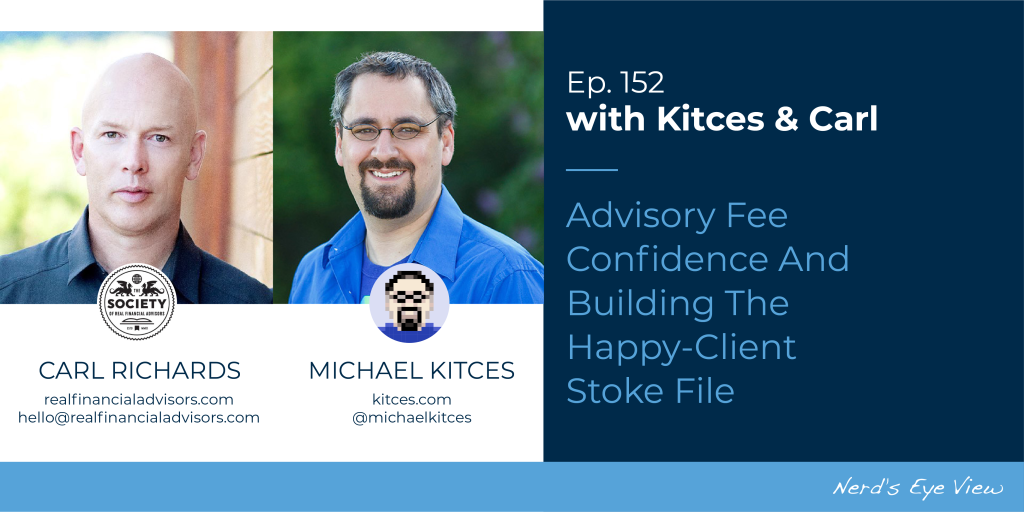How much to charge for financial advice is rarely a decision made lightly. A firm’s pricing strategy often reflects both the local market (or niche-related) norms – such as the nearly-ubiquitous 1%. Others may align with broader industry trends, like transitioning to fee-only structures to buffer against market volatility. Still others may choose a hybrid model, combining AUM fees with additional charges for other services like tax planning. Regardless of the pricing structure that firms choose, Kitces research on “How Financial Planners Actually Do Financial Planning” finds that there is a gap in “fee confidence” – while some advisors charge at or beyond “market price”, others consistently underprice themselves. This fee confidence gap has large ramifications in the long term, as firms with higher revenues can reinvest in growth – with hiring, marketing, and process improvements – that enhance their value proposition and attracts more prospective clients.
In this episode of Kitces and Carl, Michael Kitces and client communication expert Carl Richards discuss why this fee confidence gap exists, exploring the psychological, competitive, and practical factors that often drive advisors to underprice their services. They also suggest how advisors with unsustainably low fees can shift their mindset, embrace their value, and realign their pricing to reflect both the tangible and intangible value they actually provide to clients.
Developing fee confidence may pose a real challenge, especially for advisors in the early stages of their careers or struggling to ‘keep the lights on’. Pricing the impact of financial planning can be challenging, because many of its benefits – like peace of mind – are intangible, compelling in value but difficult to match with an exact price. For newer or less confident advisors, underpricing can seem like a necessary compromise to compete with more established firms. For example, an advisor may think, “The standard advisor charges a 1% AUM fee. But since I’m not as experienced as the average advisor, I’ll charge 0.8%”, even when they know that this underpricing decision could severely impact business development in the long term!
To develop fee confidence, it may help to begin with gathering external evidence. Researching what peers are charging is a logical first step, but what may be even more effective is reviewing feedback from clients and others who have worked closely with the firm. Have clients described the advice as “life-changing”? Are they raving about the advice and guidance they’ve received? These affirmations can reinforce the advisor’s value, serving as powerful reminders that help the advisor gain the confidence to charge more. Saving such feedback in a “stoke file” – a catch-all collection of notes, comments, and positive feedback – can provide a helpful confidence boost when doubts arise.
Ultimately, though, fee confidence begins internally. And while external feedback can help, an advisor’s true confidence comes from recognizing their unique strengths and understanding how they uniquely help their clients. By internalizing this value, advisors can confidently charge what they’re truly worth, paving the way for success in the long run!
Read More…
